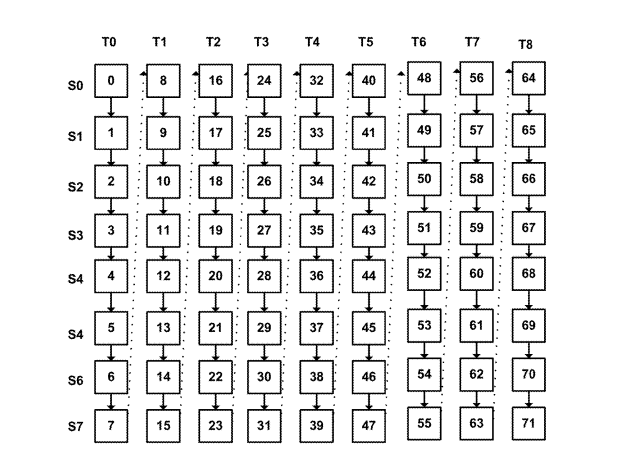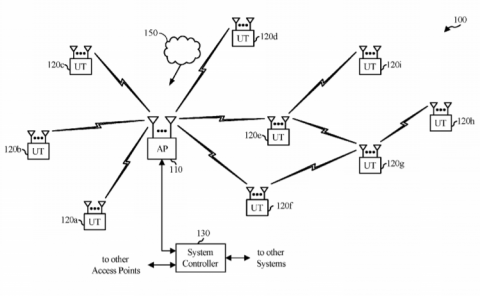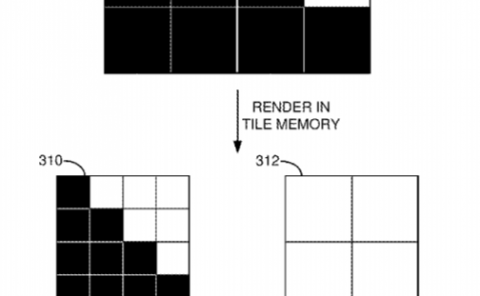Qualcomm Patent | Simplified merge list construction process for 3D-HEVC
Patent: Simplified merge list construction process for 3D-HEVC
Publication Number: 10158884
Publication Date: 2018-12-18
Applicants: Qualcomm

Abstract
A device for encoding video data includes a memory configured to store video data and a video encoder comprising one or more processors configured to, for a current layer being encoded, determine that the current layer has no direct reference layers, based on determining that the current layer has no direct reference layers, set at least one of a first syntax element, a second syntax element, a third syntax element, or a fourth syntax element to a disabling value indicating that a coding tool corresponding to the syntax element is disabled for the current layer.
Background
Digital video capabilities can be incorporated into a wide range of devices, including digital televisions, digital direct broadcast systems, wireless broadcast systems, personal digital assistants (PDAs), laptop or desktop computers, digital cameras, digital recording devices, digital media players, video gaming devices, video game consoles, cellular or satellite radio telephones, video teleconferencing devices, and the like. Digital video devices implement video compression techniques, such as those described in the standards defined by MPEG-2, MPEG-4, ITU-T H.263, ITU-T H.264/MPEG-4, Part 10, Advanced Video Coding (AVC), the High Efficiency Video Coding (HEVC) standard presently under development, and extensions of such standards, to transmit, receive and store digital video information more efficiently.
Extensions of some of the aforementioned standards, including H.264/AVC, may provide techniques for multiview video coding in order to produce stereo or three-dimensional (“3D”) video. In particular, techniques for multiview coding have been proposed for use in AVC, with the scalable video coding (SVC) standard (which is the scalable extension to H.264/AVC), and the multi-view video coding (MVC) standard (which has become the multiview extension to H.264/AVC).
Typically, stereo video is achieved using two views, e.g., a left view and a right view. A picture of the left view can be displayed substantially simultaneously with a picture of the right view to achieve a three-dimensional video effect. For example, a user may wear polarized, passive glasses that filter the left view from the right view. Alternatively, the pictures of the two views may be shown in rapid succession, and the user may wear active glasses that rapidly shutter the left and right eyes at the same frequency, but with a 90 degree shift in phase.
Summary
This disclosure describes techniques that may reduce the encoding and decoding complexity associated with inter prediction using inter-view reference pictures.
In one example, a method of encoding video data includes for a current layer being encoded, determining that the current layer has no direct reference layers; based on determining that the current layer has no direct reference layers, setting at least one of a first syntax element, a second syntax element, a third syntax element, or a fourth syntax element to a disabling value indicating that a coding tool corresponding to the syntax element is disabled, wherein a disabling value for the first syntax element indicates that inter-view motion parameter prediction is disabled for the current layer, wherein a disabling value for the second syntax element indicates that view synthesis prediction merge candidates are disabled for the current layer, wherein a disabling value for the third syntax element indicates that accessing depth view components are disabled for the derivation process for a disparity vector for the current layer, and wherein a disabling value for the fourth syntax element indicates that inter-view residual prediction is disabled for the current layer; and generating an encoded bitstream of video data comprising the first syntax element, the second syntax element, the third syntax element, and the fourth syntax element.
In another example, a device for encoding video data includes a memory configured to store video data; and a video encoder comprising one or more processors configured to: for a current layer being encoded, determine that the current layer has no direct reference layers; based on determining that the current layer has no direct reference layers, set at least one of a first syntax element, a second syntax element, a third syntax element, or a fourth syntax element to a disabling value indicating that a coding tool corresponding to the syntax element is disabled, wherein a disabling value for the first syntax element indicates that inter-view motion parameter prediction is disabled for the current layer, wherein a disabling value for the second syntax element indicates that view synthesis prediction merge candidates are disabled for the current layer, wherein a disabling value for the third syntax element indicates that accessing depth view components are disabled for the derivation process for a disparity vector for the current layer, and wherein a disabling value for the fourth syntax element indicates that inter-view residual prediction is disabled for the current layer; and generate an encoded bitstream of video data comprising the first syntax element, the second syntax element, the third syntax element, and the fourth syntax element.
In another example, an apparatus for encoding video data includes means for determining that a current layer being encoded has no direct reference layers; means for setting at least one of a first syntax element, a second syntax element, a third syntax element, or a fourth syntax element to a disabling value indicating that a coding tool corresponding to the syntax element is disabled based on determining that the current layer has no direct reference layers, wherein a disabling value for the first syntax element indicates that inter-view motion parameter prediction is disabled for the current layer, wherein a disabling value for the second syntax element indicates that view synthesis prediction merge candidates are disabled for the current layer, wherein a disabling value for the third syntax element indicates that accessing depth view components are disabled for the derivation process for a disparity vector for the current layer, and wherein a disabling value for the fourth syntax element indicates that inter-view residual prediction is disabled for the current layer; and means for generating an encoded bitstream of video data comprising the first syntax element, the second syntax element, the third syntax element, and the fourth syntax element.
In another example, a computer-readable storage medium stores instructions that when executed by one or more processors cause the one or more processors to, for a current layer being encoded, determine that the current layer has no direct reference layers; based on determining that the current layer has no direct reference layers, set at least one of a first syntax element, a second syntax element, a third syntax element, or a fourth syntax element to a disabling value indicating that a coding tool corresponding to the syntax element is disabled, wherein a disabling value for the first syntax element indicates that inter-view motion parameter prediction is disabled for the current layer, wherein a disabling value for the second syntax element indicates that view synthesis prediction merge candidates are disabled for the current layer, wherein a disabling value for the third syntax element indicates that accessing depth view components are disabled for the derivation process for a disparity vector for the current layer, and wherein a disabling value for the fourth syntax element indicates that inter-view residual prediction is disabled for the current layer; and generate an encoded bitstream of video data comprising the first syntax element, the second syntax element, the third syntax element, and the fourth syntax element.



